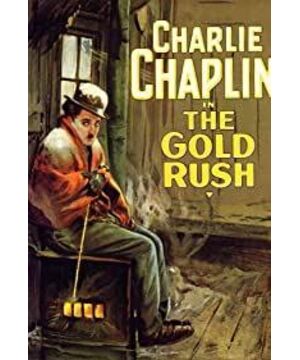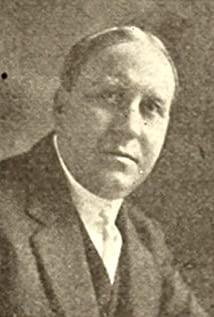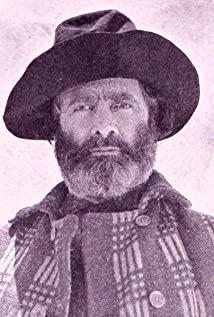Later, I gradually realized that the so-called "progress" is by no means an objective description, but a subjective evaluation. The word "change" is objective: new film forms such as sound films, color films, 3D films, etc., are nothing but changes in film technology, not necessarily progress. The accumulation and abundance of technology does not necessarily bring about "progress" or even "progress" in artistic expression. It is a matter of different opinions. With different personal preferences, different films will naturally have different evaluations and put them on the time axis. , There is a judgment of progress or regression.
Chaplin and Eisenstein will not be more stupid than the film dealers at the time, nor will they be less ignorant of watching movies than we are now. They also saw the prospect of sound films, not only commercial prospects, but also artistic prospects. They know that adding sound can not only save the theater the cost of hiring a band, but it can indeed enrich the elements of the movie. But it is this kind of abundance that they are afraid of. They are afraid that after the elements are enriched, the director's attention to a certain element will decrease, and the introduction of elements will destroy the simplicity and clarity of the silent film. The early sound films confirmed their previous concern. For movies such as "Jazz Musician", the theater can be filled with only "sound" gimmicks, so it doesn't matter whether the movie itself is wonderful or not. However, with the popularization of sound films, when "sounding" alone is not enough to attract audiences, film makers will naturally focus on film quality, and gradually realize the coordination of audio and video, and truly take advantage of the advantages of sound films. The artistic content of sound films is increasing day by day. In view of today, the same is true of the development of 3D movies. There are many bad movies on the market, but if you want to attract the audience with a 3D one, it can have a temporary effect, but it is absolutely difficult to make it last long. After the craze fades and the audience becomes smarter, 3D movies still need to focus on their value. At that time, the immersive advantages of 3D movies can be generally combined with the performance of movies, and the so-called 3D movie era will really appear.
A truly good director will naturally require every element in the film to be perfect, without ignoring a certain element. On the contrary, the integration of multiple elements will achieve expression effects that are difficult to achieve in silent films. In this sense, Chaplins seemed to be overwhelmed.
But Chaplin's other worry has become a reality. With the enrichment of film elements, the silent film era is over, and the unique beauty of silent film is also over. The beauty of silent film lies in its simplicity and clarity. All the director's intentions must be presented through the pictures and the combination of pictures. In the same picture, only a few elements will be revealed nakedly and without concealment. Just like in Chaplin's "Gold Rush", the scene when Little Fellow first arrived at the ballroom:
The distant scene is the people drinking on the second floor of the ballroom, the middle scene is the men and women embracing the spinning on the dance floor, and the foreground is outside the hustle and bustle, a lonely Little Fellow, no sound, no color, just like a simple picture The sharp black and white photography really resembles the sayings that I once disliked: like a poem: noisy ballroom / embracing joy / I am outside. No sound, no color, no sound, no color. Once the sound and color are introduced, it will endanger such a concise picture, such a bright expression, just like filling in the blanks on the white drawing and adding color, it is really a horrible thing. In this sense, the introduction of sound and color is destroying the purity of the image. When the image does not have to take up all the expressions, it is worrying how much strength the image language should have.
Take another piece of bread dance in "Gold Rush" as an example:
On New Year's Eve, Little Fellow imagined having dinner with Georgia, and performed a bread dance in front of her humorously. If the picture is in color, then Chaplin's snow-white face will not appear so prominent, and the audience's attention will be completely attracted by the bread dance he performed, and it is difficult to notice the serious and focused look on his face. In the whole movie, the funny Little Fellow only appeared with such a serious look-when he was acting for his beloved. Similarly, the introduction of music may add to the rhythm of the bread dance, but it will deprive the audience of the silent music on Chaplin's face.
In further terms, reality is not what is heard or seen, and reality requires us to imagine and perceive it. Therefore, in this sense, the stronger the film's ability to portray reality, the weaker its ability to express reality, or in other words, the greater the possibility of this. If it’s just a pile of phenomena, or take the above example as an example, no matter how advanced the film technology is, people can feel the sound of the ballroom, the dazzling shadows and even the breath, which can really make people feel immersive, but It is difficult for people to feel the loneliness and helplessness in Little Fellow's heart.
It is difficult for the so-called substitution relationship between artistic expression methods, because the orientation of each other is so different, and it is difficult to compare the advantages and disadvantages of the effects. The appearance of movies cannot replace the value of literature. In the same way, in fact, the emergence of sound films can never replace the value and role of silent films. But the problem is that movies are not only the same art, but also an extremely costly art. Since sound movies, color movies, and 3D movies can attract more audiences and recoup more profits, investors' funds will flood in. In the film form with higher profit, the film form which was originally in a parallel relationship in artistic expression has been replaced successively. And the first to be replaced are these poetic silent films. This is undoubtedly a pity: no matter how many movies Chaplin has made, there will always be time to finish it, and by then, I can only go to see Haqila.
I am not saying that the current movies are not good, but sometimes I always feel that such movies are making people more and more stupid. Although there are few film elements in the silent film era, they are not forced to the audience, but are extracted by the audience. But nowadays, all the elements are thrown to the audience in a basket, and they even want to tell the audience directly what the director wants to do in a voice-over. Today's audiences have also become passive recipients of increasingly rich film elements. Can anyone understand the last long shot in "Four Hundred Strikes" now? Nowadays, most of the moviegoers will directly pull the progress bar to skip, and then think that the director is stupid, running and chanting, so what's the point of following the filming. But I never thought that this was the director's attempt to express the joy of Antoine's escape, because he was happy, so he had to run; others were confused about the future, because he didn't know where to run, so he could only run. Nowadays, the tempo of movies is getting faster and faster, and the shots are getting shorter and shorter. This is also the reason why the audience is about to leave the audience when it gets slower and longer. Then, under the influence of such a movie, the audience will become more and more stupid. When is such a vicious circle a head?
Please see if there is a graphic version: http://23992900.blogbus.com/logs/85542684.html
View more about The Gold Rush reviews











